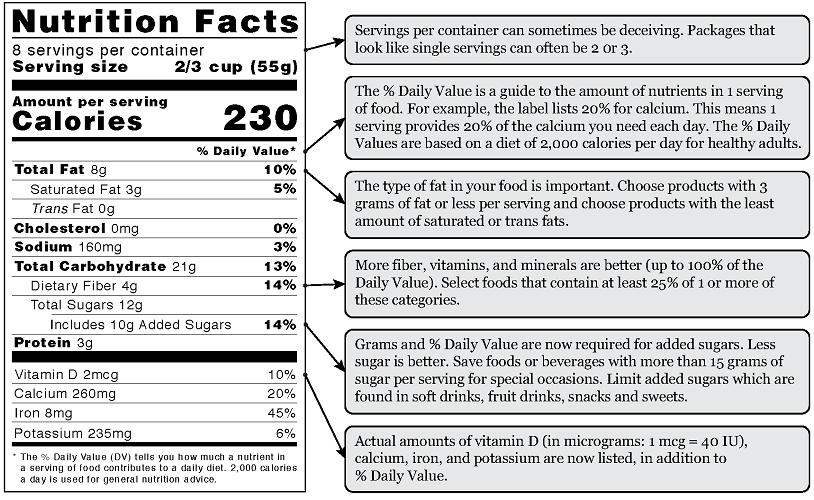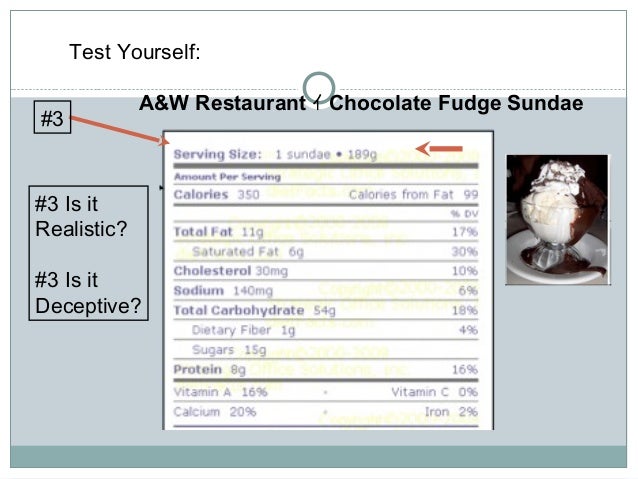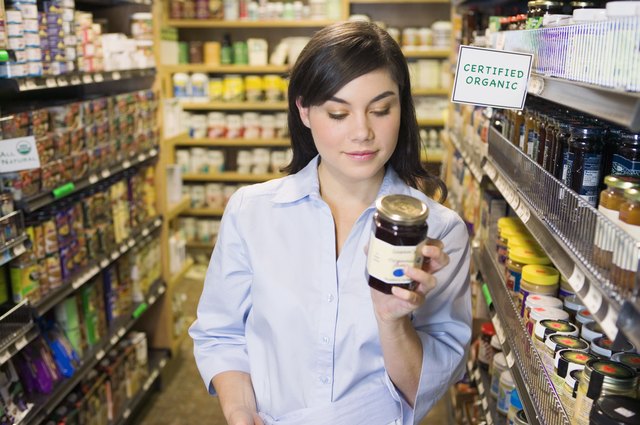39 reading calories on food labels
Reading food labels: Tips if you have diabetes - Mayo Clinic Sample Nutrition Facts label. Serving size: Serving sizes are listed in standard measurements, such as cups or pieces. Similar foods usually have similar serving sizes, so you can compare them more easily. The label also includes the number of servings per container to help you calculate the calories and nutrients in the entire package. How to Read a Pet Food Label - Emancipet Essentially, pet food labels are all about the way the company words things and the percentages of the ingredients are dictated by AAFCO's 4 main rules about product names. 95% rule. 25% rule. The "with" rule. The flavor rule. Now, let's get into exactly what all of this means! The 95% Rule.
This Is How to Read a Nutrition Facts Label on the Keto ... This act mandated that, with a few exceptions, all packaged foods needed nutrition labels — thus creating the black-and-white labels we see on packaged foods today. The nutrients that required labeling included: Calories Calories from fat Total fat Saturated fat Cholesterol Sodium Total Carbohydrate Dietary fiber Sugars Protein Vitamin A Vitamin C
Reading calories on food labels
The Basics of the Nutrition Facts Label The following is a quick guide to reading the Nutrition Facts label. Step 1: Start with the Serving Size Look here for both the serving size (the amount people typically eat at one time) and the number of servings in the package. Compare your portion size (the amount you actually eat) to the serving size listed on the panel. How to Read a Nutrition Facts Label | Everyday Health "The nutrition facts label became more commonplace in the 1970s, when more health and nutrition claims started showing up on food labels," says Kim Yawitz, RD, a gym owner in St. Louis ... Food Labels | CDC Check the Serving size first. All the numbers on this label are for a 2/3-cup serving. This package has 8 servings. If you eat the whole thing, you are eating 8 times the amount of calories, carbs, fat, etc., shown on the label. Total Carbohydrate shows you types of carbs in the food, including sugar and fiber.
Reading calories on food labels. Learning To Read Labels :: Diabetes Education Online On a nutrition food label, subtract the fiber from the total carbohydrate amount. When you read food labels, the grams of sugar are already included in the total carbohydrate amount, so you do not need to count this sugar amount separately. The grams of sugar listed include both natural sugars, from fruit or milk, and added sugars. How to Read Nutrition Facts Label | Food Network Healthy ... Take that 1600 and multiply it by 0.30 (based on our goal of getting 30% of our calories from fat). You'll get 480 calories. Then, to figure out the grams of fat you want to aim for each day,... Quick Tips for Reading the Nutrition Facts Label To create your Tip Card: 1. Use a pair of scissors to cut along the dotted lines. 2. Fold along the center line. 3. Keep the Tip Card in your wallet or purse. Calories230 Amount per serving Serving... How To Read Food Labels: Understanding the Basics - Instacart The nutrition facts table is usually found on the rear or the side of the label. This is perhaps the most useful part of a food label, providing a detailed breakdown of the product's nutritional content, including calories, protein, carbohydrates, fat, and more. 1. Beware of misleading claims
How to Understand and Use the Nutrition Facts Label | FDA That is two times the calories and nutrients shown in the sample label, so you would need to double the nutrient and calorie amounts, as well as the %DVs, to see what you are getting in two... Reading and Understanding Food Labels and Nutrition Info ... Many fresh meats, poultry and fish do not have a nutrition facts label. The average cholesterol per ounce of an animal product is 25 mg. Percent of calories from fat Divide the calories from fat by the total calories. Keep in mind not every food you eat needs to contain less than 30 percent of the calories from fat. Reading Food Labels - Food Smart Colorado On average, people need about 2,000 calories a day. Daily Value is the amount of a nutrient you should get each day. The % Daily Values tell you what percent of this daily amount is in one serving. 5% Daily Value or less means that a food is a low source of a nutrient. 20% Daily Value or more means that a food is a high source of a nutrient. Food Labels | CDC Check the Serving size first. All the numbers on this label are for a 2/3-cup serving. This package has 8 servings. If you eat the whole thing, you are eating 8 times the amount of calories, carbs, fat, etc., shown on the label. Total Carbohydrate shows you types of carbs in the food, including sugar and fiber.
How to Read a Nutrition Facts Label | Everyday Health "The nutrition facts label became more commonplace in the 1970s, when more health and nutrition claims started showing up on food labels," says Kim Yawitz, RD, a gym owner in St. Louis ... The Basics of the Nutrition Facts Label The following is a quick guide to reading the Nutrition Facts label. Step 1: Start with the Serving Size Look here for both the serving size (the amount people typically eat at one time) and the number of servings in the package. Compare your portion size (the amount you actually eat) to the serving size listed on the panel.













Post a Comment for "39 reading calories on food labels"